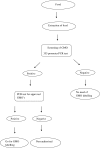Genetically modified foods: safety, risks and public concerns-a review
- PMID: 24426015
- PMCID: PMC3791249
- DOI: 10.1007/s13197-012-0899-1
Genetically modified foods: safety, risks and public concerns-a review
Abstract
Genetic modification is a special set of gene technology that alters the genetic machinery of such living organisms as animals, plants or microorganisms. Combining genes from different organisms is known as recombinant DNA technology and the resulting organism is said to be 'Genetically modified (GM)', 'Genetically engineered' or 'Transgenic'. The principal transgenic crops grown commercially in field are herbicide and insecticide resistant soybeans, corn, cotton and canola. Other crops grown commercially and/or field-tested are sweet potato resistant to a virus that could destroy most of the African harvest, rice with increased iron and vitamins that may alleviate chronic malnutrition in Asian countries and a variety of plants that are able to survive weather extremes. There are bananas that produce human vaccines against infectious diseases such as hepatitis B, fish that mature more quickly, fruit and nut trees that yield years earlier and plants that produce new plastics with unique properties. Technologies for genetically modifying foods offer dramatic promise for meeting some areas of greatest challenge for the 21st century. Like all new technologies, they also pose some risks, both known and unknown. Controversies and public concern surrounding GM foods and crops commonly focus on human and environmental safety, labelling and consumer choice, intellectual property rights, ethics, food security, poverty reduction and environmental conservation. With this new technology on gene manipulation what are the risks of "tampering with Mother Nature"?, what effects will this have on the environment?, what are the health concerns that consumers should be aware of? and is recombinant technology really beneficial? This review will also address some major concerns about the safety, environmental and ecological risks and health hazards involved with GM foods and recombinant technology.
Keywords: Allergenic foods; Food safety; Genetically engineered foods; Genetically modified foods; Public concerns; Transgenic foods.
Figures
References
-
- Allison S, Palma PM. Commercialization of transgenic plants: potential ecological risks. BioScience. 1997;47:86–96. doi: 10.2307/1313019. - DOI
-
- Ballari VR, Martin A, Gowda LR (2012) Detection and identification of genetically modified EE-1 brinjal (Solanum melongena) by single, multiplex and SYBR® real-time PCR. J Sci Food Agric. doi:10.1002/jsfa.5764, Published online 22 June 2012 - PubMed
-
- Beagle JM, Apgar GA, Jones KL, Griswold KE, Radcliffe JS, Qiu X, Lightfoot DA, Iqbal MJ. The digestive fate of Escherichia coli glutamate dehydrogenase deoxyribonucleic acid from transgenic corn in diets fed to weanling pigs. J Anim Sci. 2006;84(3):597–607. - PubMed
-
- Berberich SA, Ream JE, Jackson TL, Wood R, Stipanovic R, Harvey P, Patzer S, Fuchs RL. The composition of insect-protected cottonseed is equivalent to that of conventional cottonseed. J Agric Food Chem. 1996;44:365–371. doi: 10.1021/jf950304i. - DOI
Publication types
LinkOut - more resources
Full Text Sources
Other Literature Sources

